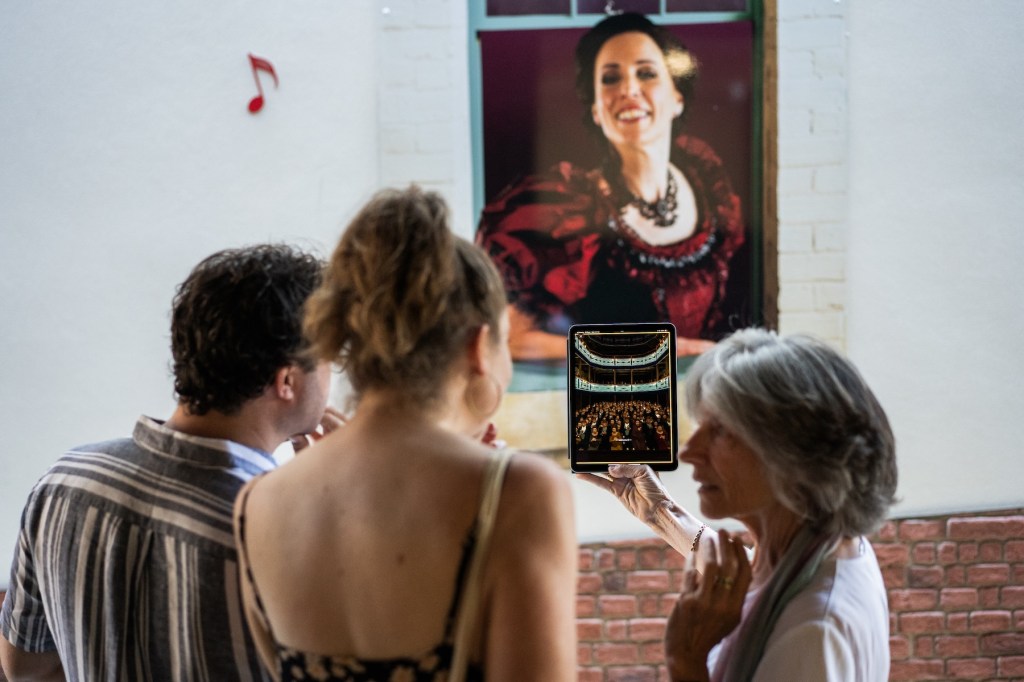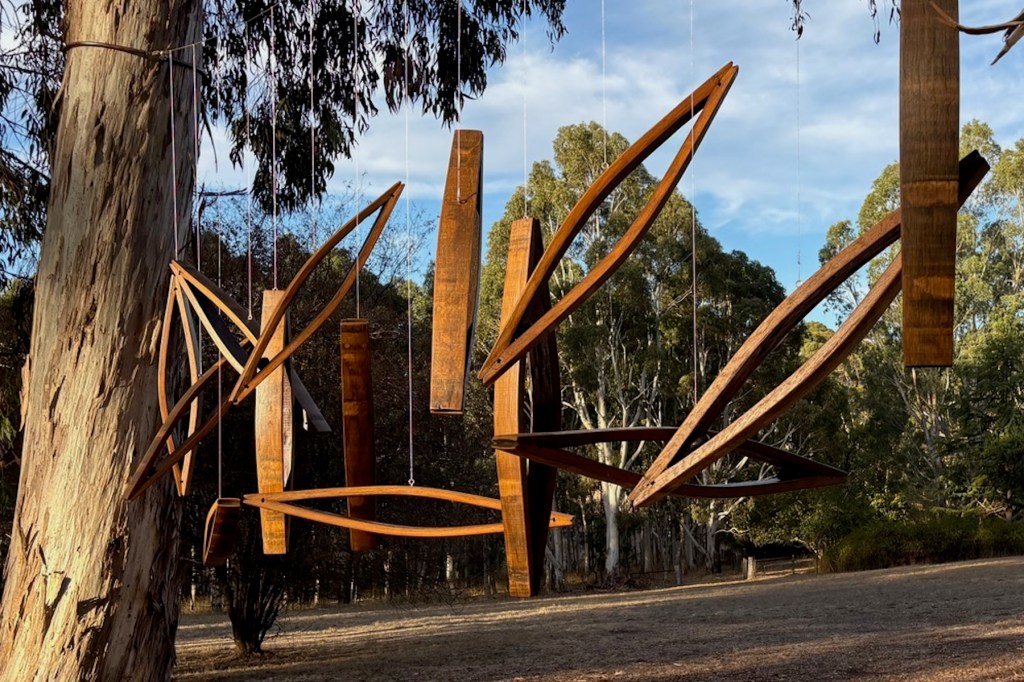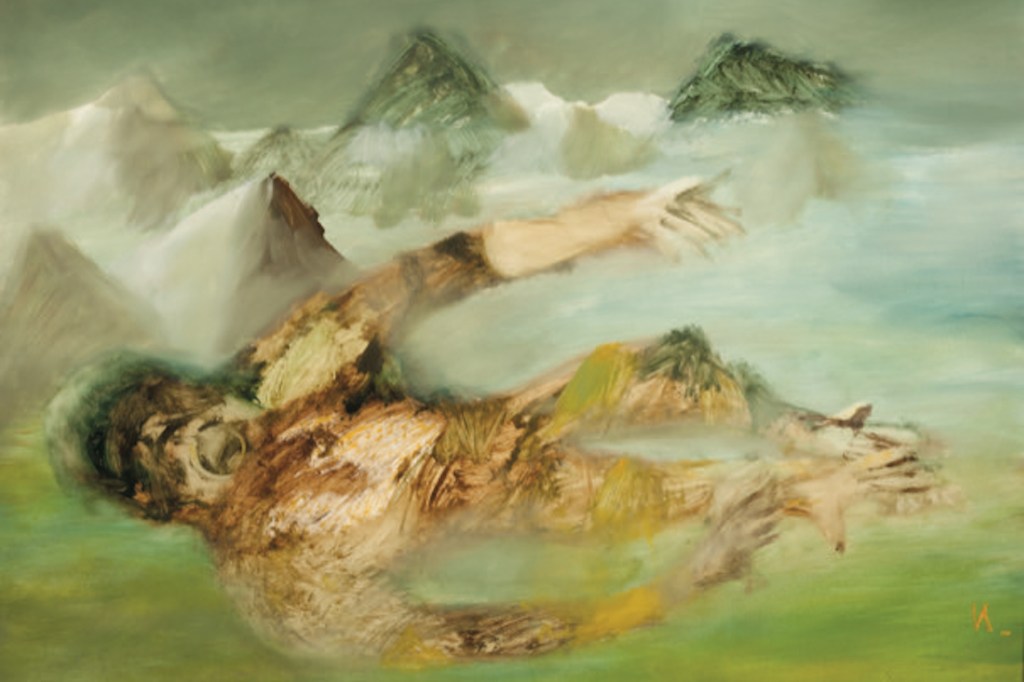Talking horses and augmented reality brings theatre history off the wall
A new public artwork at Queen’s Theatre blends performance and smartphones to reveal the overlapping histories of mainland Australia’s oldest surviving theatre.

From its little laneway off Currie Street the Queen’s Theatre has undergone many different eras and identities across its 184-year reign. This week, a new interactive mural has been unveiled that brings these colourful and complex histories to life.
“The Queen’s Wall is a journey through time and space, inspired by my passion for spatial theatre design,” says artist Mary Moore, who worked with local studio Sandpit to create the work along with a larger team of over 30 artists.
“I envisioned it as a vibrant reflection of a theatre community, brought to life through the collective creativity of many talented artists. It’s a living dialogue between the past and present.”
A 32-metre-long work running the length of the theatre’s western wall, The Queen’s Wall‘s physical presence consists of seven different panels that each offer a ‘window’ into a different chapter of its history. It features a cast of actors including former State Theatre Company artistic director Mitchell Butel portraying historical figures from Emanuel Solomon, the convict-turned-merchant who first built the theatre, to Cordelia Cameron (Ellen Steele), who portrayed Desdemonda in its inaugural performance of Othello.
Using a QR code, viewers can also access digital content that tells the deeper story behind each portrait. Along with augmented reality recreations of the theatre’s interior during each era of its existence, a series of five-minute audio pieces introduces us to the main players through ‘imagined interviews’ and reconstructed courtroom dramas.
These include John Lazar (portrayed on the wall Nathan O’Keefe), Cameron’s Othello co-star and the theatre’s onetime manager, who in 1851 took critics to court after being accused of indecency — he had apparently made “untoward motions with a carrot while onstage”.
“Allegedly I was less than appropriate onstage with carrots,” declares Lazar, voiced by actor Matt Crook. “An actor is supposed to be creative, artists never blush!”

Talking horses and a Holden Hurricane reveal the theatre’s eclectic history. Photo: Lana Adams / Supplied
The work also explores the building’s place in the darker histories of colonial South Australia. When recession cut its initial theatrical run short, the theatre was put to use as South Australia’s Supreme Court in 1843. The Queen’s Wall explores the story of Yanggarra, a Narrunga man who was enlisted as a court interpreter for the many First Nations people who were forced to navigate a colonial justice system that was firmly weighted against them.
“What had once been a place of frivolity and entertainment was now the setting for trials of murder and assault connected with the frontier conflict in the new colony,” the audio piece explains.
In one case, Yanggarra (portrayed by Cliffy Tangku Munaitya Wilson) appeared in the trial of two white men accused, and acquitted, of murdering an Aboriginal man despite several eyewitnesses. “When the accused were released, people celebrated in the streets,” the piece concludes.
Subscribe for updates
Its years as a courthouse weren’t the last time the theatre was put to other uses.
The Queen’s Wall also acknowledges its 1877 reinvention as horse bazar, and several unglamourous decades as a car park. With a little creative licence, Moore’s team has recreated a live cross from a Victorian-era horse auction, turning the microphone to several of the 165 horses stabled around the premises. An actor portraying a Holden Hurricane is also interviewed, engine noise included.
The Queen’s Wall was commissioned by the Department of Premier and Cabinet and coordinated by Guildhouse, and arrives alongside a $715,000 commitment by the state government to upgrade the theatre’s facilities — a move that hopefully will ensure its car park era remains a piece of history.
The work is now open to the public, with the theatre itself set to host Hedwig and the Angry Inch as part of the Adelaide Festival program later this month.

